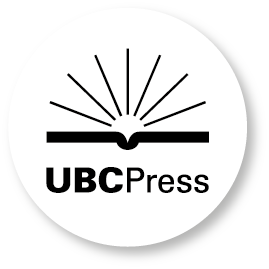
214 pages, 6 x 9
1 table image
Paperback
Release Date:09 Sep 2025
ISBN:9781978841130
Hardcover
Release Date:09 Sep 2025
ISBN:9781978841147
Film as Argument
The Secret to Feature Film Storytelling
Rutgers University Press
If you’ve picked up this book, it’s most likely that you have an interest in movies over-and-above the typical audience member. Perhaps a screenwriter, producer or director looking to improve your work, always searching for any insight that will result in better cinematic storytelling. If that’s the case, then good news: this is the book for you. It asks a deceptively straightforward question. Why do we make feature films?
Is it to entertain? To move and audience? To tell a powerful story? For fame and fortune?
You may have answered yes to each, but those answers don’t account for the practice overall. Most books about screenwriting and directing are primarily concerned with craft and technique, but how can you truly understand filmmaking – or make the best films - unless you know what purpose it really serves.
So what’s the secret? As the title of this book suggests, making feature films is fundamentally the practice of making a very specific type of argument. To see how this works, we will deep-dive into how filmmakers are trained and taught to think about filmmaking, and what traditions they knowingly or unknowingly follow. We will look at hundreds of films and some major case studies, including Toy Story 3, Schindler’s List, Raiders of the Lost Ark, Amour, and mother!, to explore how and what films argue, and why knowing this can both unlock both a greater appreciation of the form, and improve the impact your films make.
Is it to entertain? To move and audience? To tell a powerful story? For fame and fortune?
You may have answered yes to each, but those answers don’t account for the practice overall. Most books about screenwriting and directing are primarily concerned with craft and technique, but how can you truly understand filmmaking – or make the best films - unless you know what purpose it really serves.
So what’s the secret? As the title of this book suggests, making feature films is fundamentally the practice of making a very specific type of argument. To see how this works, we will deep-dive into how filmmakers are trained and taught to think about filmmaking, and what traditions they knowingly or unknowingly follow. We will look at hundreds of films and some major case studies, including Toy Story 3, Schindler’s List, Raiders of the Lost Ark, Amour, and mother!, to explore how and what films argue, and why knowing this can both unlock both a greater appreciation of the form, and improve the impact your films make.
DARREN PAUL FISHER is an international multi-award-winning screenwriter, director, producer, and head of film, screen and creative media at Bond University, Australia.
Contents
Note on Screen References
Part I: The Elephant in the Screening Room
Chapter 1 What’s the Big Secret?
Chapter 2 The Other Half of the Story: A Brief History of Film as Argument
Chapter 3 What and How Films Argue
Chapter 4 Alternate Conceptions
Part II: The Case Studies
General Notes on the Case Studies
Chapter 5 The Exemplar: Toy Story 3
Chapter 6 The Counter-Example: Mulholland Drive
Chapter 7 Three Approaches: Brave, Frozen and Barbie
Part III: Now on Release and Coming Attractions
Chapter 8 Why Failures Succeed: The Cinema of Compensation
Chapter 9 The End
Acknowledgments
Screen References
Bibliography
Index
Note on Screen References
Part I: The Elephant in the Screening Room
Chapter 1 What’s the Big Secret?
Chapter 2 The Other Half of the Story: A Brief History of Film as Argument
Chapter 3 What and How Films Argue
Chapter 4 Alternate Conceptions
Part II: The Case Studies
General Notes on the Case Studies
Chapter 5 The Exemplar: Toy Story 3
Chapter 6 The Counter-Example: Mulholland Drive
Chapter 7 Three Approaches: Brave, Frozen and Barbie
Part III: Now on Release and Coming Attractions
Chapter 8 Why Failures Succeed: The Cinema of Compensation
Chapter 9 The End
Acknowledgments
Screen References
Bibliography
Index









